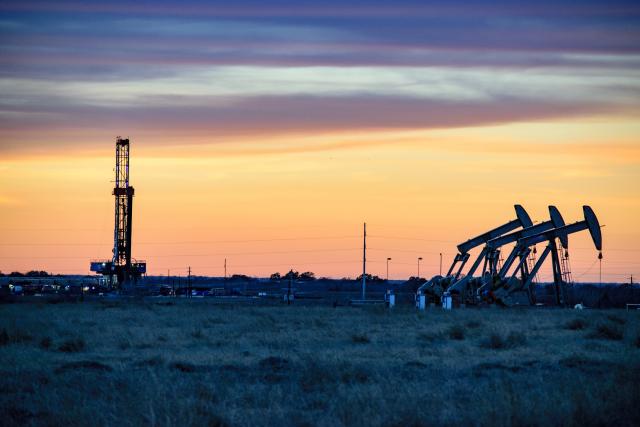
(Source: FreezeFrames/Shutterstock.com)
While publicly traded producers in the Permian Basin are continuing to practice capital discipline even though oil prices recently soared to over $80 a barrel, the ambitious growth plans of the privately held operators are expected to drive a drilling surge in the nation’s largest shale play.
Vaccine-fueled demand recovery has paved a path for private operators to increase spending and pump more in West Texas and parts of New Mexico.
For instance, Tyler, Texas-based Mewbourne Oil Co. is now running 17 drill rigs in the U.S., more than Exxon Mobil Corp. and Chevron Corp. combined, Bloomberg reported earlier this month.
Meanwhile, Trigo Oil & Gas, a subsidiary of Wheat Resources, just drilled its first two wells in Reeves County, Texas, near the New Mexico border, with a third on the way.
According to Rystad Energy forecasts, an increase in production from the Permian Basin could lead to pre-pandemic output of 4.9 million bbl/d by this month, which is currently being driven by a drilling surge from the privates.
“In general, private players in the U.S. oilfield currently have advantages over their publicly traded peers,” Doug Sheridan, managing director and founder of Houston-based EnergyPoint Research, told Hart Energy
“At the moment, private players operate approximately 60% of rigs in the U.S., compared with about 40% just before the pandemic. This is no accident. Not only are private producers less beholden to ESG and other potential value-destroying pressures of the day, because of their smaller size they can raise production with little fear of affecting the price of oil or spooking OPEC. It’s an enviable position, and one that private companies will certainly—and likely successfully—exploit,” he said.
Even as private operators continue ramping up drilling, $80 WTI isn’t enough to trigger a drilling boom in the Permian—at least not yet.
One of the reasons is the “backwardated” nature of crude prices, Sheridan noted.
“Although the front-month price of WTI is currently just above $82, the curve falls significantly as time goes on. With current 12 and 24-month strips at just under $78 and $74 respectively, it’s hard to see publicly traded producers—who have sworn themselves to discipline—opening up their checkbooks in a big way,” he said.
However, in the longer term, should backwardation lessen and the strip eventually reaches $85, Sheridan said greater producer confidence will cause drilling to rise to the point where it “certainly feels like a boom.”
“Add another $5 to $10, and we’re almost certainly in boom territory. Of course, all of this assuming that headwinds like supply-chain bottlenecks, oilfield inflation, labor shortages and Biden administration obstinacy don’t freeze the industry out from taking advantage of higher prices.”
What about $100 oil?
There is a growing consensus in the oil market that the forward oil price curve could mean $100 per barrel very soon.
Sheridan expressed doubt over the popular belief that U.S. shale producers are likely to maintain their current production discipline even if prices soar to $100 per barrel.
“Discipline can be a good thing, but leaving value on the table for the sake of austerity should not be a permanent strategy,” he said.
“As prices rise, I suspect many management teams will decide to let themselves out of the penalty box,” he continued. “In most cases, they would be right to do so. With very high prices, most will be better off adjusting production higher, in line with market fundamentals… assuming supply-chain and regulatory issues don’t become prohibitive. Of course, their challenge will then be to grow within their means. I believe most will.”
James West, senior managing director at Evercore ISI, also added, “If oil prices spike to $100 a barrel, privates will keep spending more while the public companies may choose to increase returns to shareholders from unexpected windfall profits.”
West believes that in the current situation, private equity-backed producers are also at an advantage because “the motivations for these companies is not to return capital to shareholders but rather spend to grow production.”
“These entities will get bigger at higher oil prices as their cash flow increases,” he said.
Recommended Reading
Aramco Reports Second Highest Net Income for 2023
2024-03-15 - The year-on-year decline was due to lower crude oil prices and volumes sold and lower refining and chemicals margins.
Baker Hughes Awarded Saudi Pipeline Technology Contract
2024-04-23 - Baker Hughes will supply centrifugal compressors for Saudi Arabia’s new pipeline system, which aims to increase gas distribution across the kingdom and reduce carbon emissions
Greenbacker Names New CFO, Adds Heads of Infrastructure, Capital Markets
2024-02-02 - Christopher Smith will serve as Greenbacker’s new CFO, and the power and renewable energy asset manager also added positions to head its infrastructure and capital markets efforts.
From Restructuring to Reinvention, Weatherford Upbeat on Upcycle
2024-02-11 - Weatherford CEO Girish Saligram charts course for growth as the company looks to enter the third year of what appears to be a long upcycle.
TechnipFMC Eyes $30B in Subsea Orders by 2025
2024-02-23 - TechnipFMC is capitalizing on an industry shift in spending to offshore projects from land projects.





